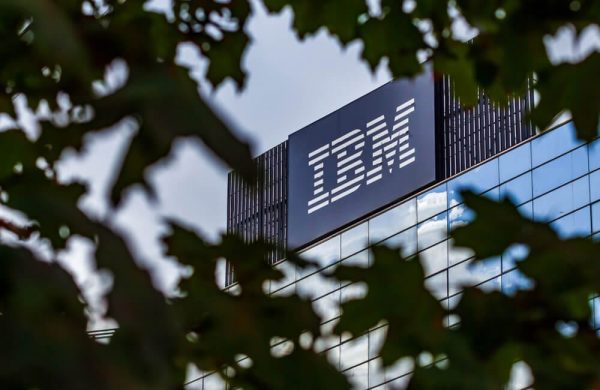 Parler
Parler Gab
Gab
- IBM plans to launch a 10,000-physical-qubit “Starling” quantum computer by 2029, using error-correcting LDPC codes to achieve fault tolerance.
- Starling will execute 100 million quantum operations on 200 logical qubits, surpassing today’s systems by 20,000x in computing power.
- IBM’s modular architecture reduces physical qubit needs by 90% through LDPC and paves the way for scalable quantum computing.
- Key milestones include the 2025 Loon chip, 2026 Kookaburra module and 2027 Cockatoo entanglement step before Starling’s 2029 debut.
- IBM targets quantum advantage by 2026 and a 2,000-logical-qubit “Blue Jay” system by 2033, positioning as leader in quantum commercialization.
From quantum baby steps to the edge of scalability
Quantum computing has long been hampered by “noise” intrinsic to qubits, which degrade operational accuracy as systems grow. Early error-correction efforts relied on surface codes—a method that required a thousand physical qubits per logical qubit, rendering large-scale systems impractical. IBM’s LDPC advance slashes this ratio, requiring just 50 physical qubits per logical qubit, letting systems scale exponentially. The company’s path to Starling builds on over a decade of incremental progress. Its Heron architecture (2023) debuted 127-qubit chips with improved coherence, while the 2024 Flamingo chip introduced long-range qubit couplers. Yet these gains remained outpaced by error rates stymieing quantum algorithms. The LDPC-based bicycle code, first unveiled in IBM’s 2024 Nature paper, finally provides the mathematical framework for stable, large-scale computing.Breaking down the breakthrough: How LDPC codes conquer chaos
IBM’s LDPC codes work like a precision algorithm for quantum error correction (QEC). The system encodes logical qubits across physical qubits in groups called “gros,” each containing 144 data qubits and 144 syndrome checks. These “checks” identify errors by comparing qubit states against predefined parity patterns, akin to how classical computers detect corrupted code. Crucially, LDPC codes enable real-time adaptation. When an error is detected, classical decoders like IBM’s Relay-BP—which fits on a single FPGA chip — rapidly update the system’s understanding of qubit health, avoiding cascading failures. IBM claims this approach reduces error-correction overhead to just 5-10% of leading decoders, freeing qubits for computation instead of overhead. “We’ve moved from error mitigation, which only dampens noise, to full error correction,” said Blake Johnson, IBM’s quantum engine lead. “This is the difference between training wheels and a self-balancing bike — the latter lets you scale in ways the former never could.”The roadmap: A stepladder to quantum supremacy
IBM’s four-phase roadmap to Starling blends hardware and software innovation:- 2025: The Loon chip debuts, featuring “C-couplers” enabling long-range qubit connections within a chip. This paves the way for LDPC error-correction experiments.
- 2026: The Kookaburra processor becomes the first to encode information in LDPC-based memory and process it with attached logical processing units (LPUs).
- 2027: Cockatoo modules demonstrate entanglement between distant quantum chips using “L-couplers,” proving modular scalability.
- 2029: Starling achieves full fault tolerance, running circuits for key industries while setting the stage for Blue Jay (2,000 logical qubits) by 2033.
Beyond 2029: Quantum’s industrial revolution
IBM predicts Starling will unlock quantum advantage — a state where quantum systems surpass classical computing for specialized workloads — as early as 2026. Applications span pharmaceuticals (simulating drug interactions), finance (portfolio optimization under uncertainty) and materials science (designing ultra-efficient semiconductors). Its 2025 Nighthawk processor, with 120 qubits and square-lattice connectivity, is already preparing clients for these breakthroughs. “IBM isn’t just racing toward logical qubit counts—it’s ahead in architecting systems that don’t fall apart mid-calculation,” noted Berenice Baker of Enter Quantum. For businesses, preparing for Starling’s era is urgent. “Waiting until 2029 to explore quantum applications is like waiting until the first electric car hit the roads to learn to drive,” warned Arvind Krishna, IBM’s CEO. The company has opened its quantum cloud platform to corral enterprise and academic users.A new era in quantum computing nears as IBM paves the way
IBM’s 2029 Starling marks more than a technical milestone — it signals the birth of practical quantum computing. By solving fault tolerance, a problem once derided as a “decade away,” the company has slashed the path to quantum usability from theoretical pursuit to engineering sprint. As enterprises from Boeing to the Cleveland Clinic begin testing algorithms today, the race to a post-quantum future crescendos. For IBM, the question is no longer if, but when. Sources for this article include: LiveScience.com IBM.com IOTworldtoday.comU.K. police deploy controversial AI surveillance tool built by Palantir
By Laura Harris // Share
BRICS nations forge new world order as west’s economic collapse accelerates
By Finn Heartley // Share
By Lance D Johnson // Share
Trump grants TikTok another 90-day reprieve as ByteDance struggles to secure U.S. buyer
By Cassie B. // Share
Governments continue to obscure COVID-19 vaccine data amid rising concerns over excess deaths
By patricklewis // Share
Tech giant Microsoft backs EXTINCTION with its support of carbon capture programs
By ramontomeydw // Share
Germany to resume arms exports to Israel despite repeated ceasefire violations
By isabelle // Share










